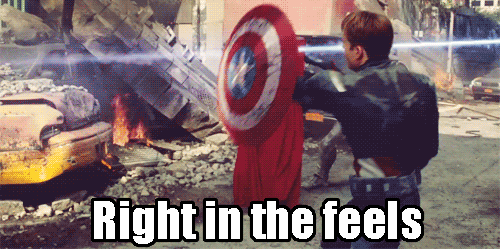I read a lot of YA. Mostly YA. I write YA, so it’s important for me to keep up with what’s going on in the field, and I like reading my fellow author’s work. It’s also a category I enjoy in general–I read a lot of YA when I was a teen, and haven’t abandoned that side of the bookstore yet.
So I definitely agree that twenty-somethings can get a lot out of YA. They’re coming of age stories, and when you’re in your 20s, being able to reflect on your own teen years while also still feeling so close to that instability and possibility makes for a great reading experience.
However, one part of the post stood out to me: “As far as I can tell, apart from the unwritten no-graphic-intimacy rule, the only true requirement for a book to be considered YA is that the protagonist(s) must be somewhere between the ages of 13 – 19.” Sharma is making a point about how YA can consist of all kinds of genres and plots and emotions, which is true and awesome.
But this got me thinking about what actually defined YA. If the requirement is just that it’s about a teen protagonist, what about books like The Age of Miracles or Tell the Wolves I’m Home. Although those books have a lot of crossover appeal, I’d put them in the general adult fiction section of the bookstore, not with the YA novels. And I’d definitely classify The Book Thief as a YA novel, but its narrator is Death–not exactly your typical teenager.
So here’s my totally non-scientific breakdown of what makes a YA novel:
The main character is a teenager

Again, this can vary a little, but for the most part the protagonist is a teenager. This is about the teen experience, not about the kid or adult experience.
The POV is immediate

This is what makes the big difference for me. Whereas books like The Age of Miracles or even To Kill a Mockingbird are about young characters, and potentially read by teen readers, what makes YA particular is that it’s about that moment of the teen experience. It’s not set many years later, from an adult perspective looking back on this experience. It’s set right then, when the emotions are high and the future isn’t always clear.
The POV is close

Even when a book is written in third person POV, I find that YA novels are written much closer to their main characters’ perspectives. Adult novels tend to keep their characters at more of a distance. One thing I like about YA is that the narration isn’t afraid to get into the emotional messiness.
And maybe most importantly…
Teens are the intended audience

There have been a lot of articles in the past five years about adults reading YA and if that’s okay (of course it is), but they’re not the people for whom the books are written. These books are written with teens and their particular experiences and pressures and dreams and realities in mind. When I write YA, I want to connect with teens who are experiencing a lot of things for the first time and forming their identities and figuring out who they want to be and where they want to go. If these stories also connect with adult readers, that’s fantastic. But it’s secondary. Teen readers, YA is yours, first and foremost.
No matter what makes YA, it’s exactly where I want to be as a writer.
Are there any other features that you think define YA literature? Share them in the comments!







